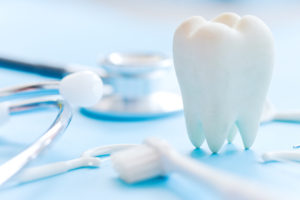 If you are worried that dental work during pregnancy negatively affects the fetus, remember it is exactly the opposite! Dental care before and during pregnancy actually guarantees both your and your baby’s well-being. Hormonal changes that occur during pregnancy cause the gums to swell and bleed, which may lead to trapped food causing increased irritation to your gums while also increasing the risk of gum infections.
If you are worried that dental work during pregnancy negatively affects the fetus, remember it is exactly the opposite! Dental care before and during pregnancy actually guarantees both your and your baby’s well-being. Hormonal changes that occur during pregnancy cause the gums to swell and bleed, which may lead to trapped food causing increased irritation to your gums while also increasing the risk of gum infections.
What is safe to do?
All emergency and regular dental treatments by family dentistry such as cavity fillings, crowns, root canals, tooth extractions, and dental cleanings can be done during pregnancy. It is recommended to complete such dental work, as well as have regular check-ups, since it helps reduce the risk of infections and gum disease. You can see here to get to a dentist to have your teeth checked and more.
Dental work will be easier to do during the second trimester, as the first trimester is the most critical in the development of the fetus and it may be challenging to lay on your back for an extended period of time once in the third trimester. You can get dental implants after your first trimester. However, it is better to wait until delivery. If you need to get them, take expert advice from Cutting Edge Periodontist providing all on 4 dental implants. Make sure that you know everything about it to avoid complications.
Cosmetic procedures such as teeth whitening and elective treatments should be postponed until after the baby has been born to avoid exposure to any risks. You can avail the best cosmetic dentistry at Eccella Smiles post-delivery.
Morning sickness and rising hormone levels put you at risk for periodontal disease and tender gums—also called pregnancy gingivitis. Follow regular oral hygiene procedures, but you may want to consider using flavor-free toothpaste and/or mouth rinse. Expert advice like what you will find out here regarding the right dental products can help. You can rinse out your mouth with just water if you have frequent vomiting. Consult your dentist for suggested brands of toothpaste, mouth rinse, and other products.
Anesthesia, Medications, and X-rays
Lidocaine is most commonly used to induce anesthesia during dental work. Though it does cross the placenta once administered, studies have not yet suggested definite adverse effects. The anesthesia you receive should be as little as possible, but it is most important for you and your baby to be stress-free and comfortable.
Antibiotics that may be prescribed during dental work to avoid infections, such as penicillin, amoxicillin, and clindamycin, have not been proven as posing a risk to the fetus.
Most x-rays used in dental diagnoses do not have a radiation level high enough to cause any problems; your dentist should take appropriate care to shield your abdomen and thyroid.
More

When does it happen?
Menopause symptoms occur at the end of the body’s menstrual cycles, usually when women reach their 40s or 50s; perimenopause begins a few years before menopause. Some women may experience menopause as late as their 60s. The average age in the US is 51 and the most common reason is the natural biological decline of reproductive hormones. Menopausal age varies and procedures such as chemotherapy and/or radiation, hysterectomy, or primary ovarian insufficiency can lead to early menopause.
Perimenopause Symptoms
Experiencing the following, additionally to irregular periods, alerts you that your body is in perimenopause:
- Vaginal dryness and irritation
- Hot flashes and chills
- Night sweats
- Problems sleeping
- Mood changes
- Slowed metabolism and weight gain
- Thinning hair and dry skin
- Loss of breast fullness
- Thin bones
Period irregularity does not guarantee you are in menopause, so until you are sure do not stop using contraceptive methods. Your ovaries are still producing eggs, even though your hormone levels are changing.
Menopause
Leading up to menopause, you will experience changes in menstruation, with period irregularity that includes either heavier periods or periods that skip for a month or more than return regularly for a few months. Once you have gone 12 months without menstruating, your body has gone into menopause.
Treatment
There are different types of treatment available to ease menopausal symptoms.
Menopause hormone therapy (MHT) is one of the most common treatments, though it is not safe for all women. You should always consult your healthcare provider, and avoid MHT if:
- You think you are pregnant
- You have had certain types of cancer, blood clots, a stroke or heart attack
- You have liver disease or problems with vaginal bleeding
Non-hormone treatments approved by the FDA are also an option, especially when it comes to easing the symptoms of severe hot flashes and pain with sexual activity (dyspareunia).
Natural methods such as dietary supplements or over-the-counter natural hormone creams may be used to alleviate some menopausal symptoms.
Every treatment method has advantages and disadvantages, and there is no one-fits-all solution to dealing with menopause. Always consult your healthcare provider before pursuing treatment and be knowledgeable about potential risks.
After Menopause
Some of the symptoms may continue after menopause, such as vaginal dryness and changes in sex drive; seek methods that will help you protect your heart and prevent bone loss. Postmenopausal vaginal bleeding should not occur, and if it does it may be a sign of a medical issue that requires urgent attention.
More

Autoimmune diseases are a group of more than eighty chronic, often disabling, illnesses. These diseases are caused by underlying defects in the body’s immune system, which is a complex network of cells and organs that defend the body from outside invaders such as bacteria, germs, and viruses. While these disorders are not limited to the female population, they disproportionately affect women. Nearly 80% of those affected by autoimmune diseases, about 8% of the U.S. population, are women.
The immune system functions by differentiating between what is normal for the bodily system and what is an outsider. An autoimmune disorder causes the body to create autoantibodies that attack normal cells by mistake while regulatory T cells fail to correct the immune system imbalance. When this happens, the immune system is attacking the body from within.
Who is at risk?
Autoimmune diseases can affect anyone; researchers have identified certain risk factors. Women of childbearing age are most at risk for autoimmune disorders. Those with a family history of autoimmune disorders, especially lupus and multiple sclerosis, are more susceptible to them. Certain environmental factors, such as sunlight, chemical solvents, and bacterial and viral infections are linked to some autoimmune disorders.
What are the most common autoimmune disorders?
While there are many autoimmune disorders that affect women, four of the most common and debilitating are multiple sclerosis (MS), lupus, rheumatoid arthritis (RA), and scleroderma.
- MS affects 250,000 to 350,000 people in the U.S., almost twice as many women as men. It causes varying degrees of neurological impairment, such as paralysis, tremors, lack of coordination and balance, and numbness and tingling in extremities. While symptoms are treatable, there is no cure or definitive cause.
- Lupus is a chronic inflammatory autoimmune disease that can affect the joints, skin, blood cells, heart, and lungs. It can also cause fever, weight and hair loss, fatigue, rashes, headaches, and dizziness. Out of the 1.5 million people afflicted with lupus in the U.S., 90% are women, and it is more common in black, Hispanic, Native American, and Asian women than Caucasian women.
- RA affects about 1.3 million people in the U.S., twice as many women as men. It is an inflammatory disease that causes pain, swelling, stiffness, swollen and deformed joints, and reduced movement and function. It may also be accompanied by fatigue, fever, weight loss, eye inflammation, anemia, and lung disease.
- Scleroderma entails an overproduction of collagen in the skin and blood vessels, leading to an abnormal growth of connective tissue that can interfere with the functioning of affected organs. Additional symptoms include thickening of the skin, pain and stiffness in fingers and joints, shortness of breath, and diarrhea or constipation. More women than men are among the 40,000 to 165,000 affected by scleroderma in the U.S.
While there are no cures to these and other autoimmune diseases, there are types of both over-the-counter and prescription medications that relieve symptoms, replace vital substances the body cannot make on its own, and suppress the malfunctioning immune system. Patients also utilize various alternative treatments, such as herbs, chiropractic treatments, acupuncture, and hypnosis. Women should be encouraged that even though their autoimmune diseases might not go away, the conditions can be managed and should not prevent them from living full, active lives.
More

With the average age of first-time mothers on the rise, many women are waiting until their mid- to late 30s to begin trying to get pregnant. While conceiving after 35 is still very possible, there some issues to take into account. Less frequent ovulation is the most common age-related issue with conception. With time, the number and quality of eggs decreases. Other health issues in women over 35—such as prior surgery or infection that may have caused scar tissue, endometriosis, fibroids, and chronic issues such as high blood pressure and diabetes—also makes conception more difficult. Miscarriages are more common in women over 35 as well.
While this may seem overwhelming, there are many things you can do to make the process go smoothly:
- Set realistic goals: It takes an average of one to two years for women to conceive after 35, so be prepared and manage expectations accordingly. Do not put too much energy and focus into each cycle. While it’s harder said than done, try keeping it as a back-burner goal.
- Be healthy: Diet and exercise can play a huge role on your overall life—including well-being, stress levels, chronic conditions, and more—all of which contribute to your body’s ability to conceive. There’s no time like the present to eat better and get exercise! Aim for 30 minutes of moderate activity five times per week. This includes walking, biking, flow yoga, swimming, and more. Also work hard to make healthy food choices, with a focus on five servings of fruit and vegetables each day, along with lean meats and whole grains.
- Make a pre-conception doctor appointment: When you are getting close to being ready, it’s the right time to talk with your doctor. At this visit, go over your medical history, current medications, and lifestyle. It’s never too soon to get in better shape—mentally and physically.
- Seek at-home screening: Both women and men can take an at-home fertility test to initially gauge fertileness. While less thorough and conclusive than tests at your doctor’s office, at-home screening often provides peace of mind at a lower cost.
- Pick up an ovulation kit: Women typically ovulate 14 days before they get their period. However, some women experience irregular cycles, making ovulation kits useful. Women release a hormone called luteinizing roughly 24 to 48 hours before ovulation. Ovulation kits test for that hormone to narrow in on a more likely conception window.
- Track your cycle digitally: While, of course, anyone can take out a pen and a calendar to keep written track of their period, but, like most analog activities, there’s an app for that. Fertility apps track your cycle to let you know your most fertile days based on past periods. Additionally, many activity monitoring apps, such as Fitbit, include a fertility tracking option.
When to see your doctor:
- The six-month mark: Typically, it’s best to try for six months before enlisting the help of a specialist or seeking advanced fertility testing.
More

Body image issues are pervasive in today’s society. Approximately 91% of women are unhappy with their bodies, while only 5% of women naturally have the supposedly “ideal” body type as portrayed in the media. A negative body image in young adults can lead to many adverse effects, such as anxiety, depression, and eating disorders.
It is especially important to reach out to young adults regarding a healthy body image, as 95% of people with eating disorders are between the ages of 12 and 25. Additionally, it is crucial to keep in mind that body image issues do not only affect women and girls, despite common stereotypes. Research suggests that 10% of people treated for eating disorders are male.
In teenagers and young adults, there are many causes of body image issues. The list below, while certainly not exhaustive, contains some of the most common factors in the development of a negative body image.
- Natural weight gain and body changes due to puberty
- Peer pressure/negative friend group
- Cultural differences and expectations
- Unreasonable body image expectations from media images, celebrities, etc.
- Family members or trusted adults who are overly concerned with their own weight or appearance or their teen’s weight or appearance
- Exposure to material that sexualizes young people
In encouraging positive body image, the most important component is encouraging and open communication regarding changing bodies and outside influences. You can’t completely control the messages that young women are exposed to on a daily basis, but you can help them process and deconstruct these messages in a healthy manner.
Tips for encouraging positive body image in teens and young adults:
- Set a positive body image example: Young women look up to the trusted adults in their lives to model appropriate behavior and expectations. Be mindful of the language that you use regarding your own body and avoid criticizing others’ bodies.
- Communicate about puberty and body changes: Puberty is a confusing time for any teen to navigate, especially when dealing with seemingly random and rapid changes in their mental, emotional, and physical states. As a parent, teacher, or other trusted adult, you can help your teen deal with this difficult experience with open and honest communication regarding what to expect and how to process it, especially reassuring them that they are not alone and that what they are going through is completely normal.
- Encourage positive friendships: Help the young women in your life build an accepting and caring friend group. Teenagers are heavily influenced by their peers, so while you cannot (and should not) choose their friends for them, you can encourage them to gravitate towards people who share their values and goals.
- Foster healthy habits rather than a certain body type: Instead of focusing on a certain ideal weight or body size, encourage your teen to choose healthy foods that make them feel good and are also tasty.
- Discuss media and cultural messages: Encourage your teen to question messages from social media, the Internet, television, etc., especially regarding body pressures.
- Praise achievements: Compliment teenagers on their achievements, efforts, and skills, rather than appearance.
- Promote enjoyable physical activity: Help your teen to find enjoyable physical activities. Make exercise about fun and feeling good rather than achieving a certain body type.
More
 Most women who have handled a box of tampons have come across the words “toxic shock syndrome” (TSS) without spending much time contemplating tampon safety. This rare, but potentially life-threatening, condition is caused by bacterial infections, mainly the Staphylococcus Aureus or the Streptococcus bacteria. TSS is mostly associated with the use of tampons as it is thought that the bacteria thrive in the presence of a super-absorbent tampon. Possible symptoms include high fever, rash on the palms and soles, low blood pressure, vomiting or diarrhea, muscle aches, headaches, disorientation, and redness of the mouth, throat and eyes.
Most women who have handled a box of tampons have come across the words “toxic shock syndrome” (TSS) without spending much time contemplating tampon safety. This rare, but potentially life-threatening, condition is caused by bacterial infections, mainly the Staphylococcus Aureus or the Streptococcus bacteria. TSS is mostly associated with the use of tampons as it is thought that the bacteria thrive in the presence of a super-absorbent tampon. Possible symptoms include high fever, rash on the palms and soles, low blood pressure, vomiting or diarrhea, muscle aches, headaches, disorientation, and redness of the mouth, throat and eyes.
Although TSS can affect anyone, most cases caused by the Staphylococcus bacteria occur in women of menstruating age, followed by cases occurring in older women, children, and men. As far as tampon use is concerned, use of super-absorbent tampons, as well as use of tampons when there is low blood flow, may be increasing the risk of TSS.
To reduce the risks of TSS, focus on these tampon safety tips:
- Change tampons every few hours
- Avoid tampons with applicators, as they increase the danger of scraping the vaginal walls
- Be gentle when inserting and/or removing tampons
- Avoid using tampons overnight or when the flow is light
- Maintain personal hygiene during your period and thoroughly wash your hands before and after handling tampons
- Use tampon immediately after unwrapping and avoid handling more than necessary
- Do not use tampons if you are not on your period
In addition to TSS, tampons can also expire. Some companies may provide an expiry date on the tampon boxes, but that may not always represent the life cycle of the tampons. You may hear that the shelf life of a tampon is about five years, but this comes with certain requirements.
To be safe when using tampons, consider the following:
- Tampons are sanitary, but not sterile
- If there’s no expiration date, write the purchase date on the box
- Always keep tampons in their original packaging and away from excessive moisture, as this reduces the risk of contamination
- The bathroom is NOT the best place to store your tampons: find a cabinet that’s cool and dry
- Don’t let tampons loose in your purse—to avoid ripping the packaging store tampons in a small bag or pouch
- Remember that debris, dust, dirt, and/or mold are not always visible; if the packaging has been ripped or if you have stored tampons in less-than-ideal conditions, it is best to not use them
- Do not use a tampon if there’s noticeable discoloration, mold patches and/or odor
More
 Stress is one of modern life’s biggest obstacles. While the amount of stress varies from person to person, day to day, and month to month, more than two-thirds of people feel stress on a daily basis. Dealing with stress can lead to issues at work, school, and home. Combating stress depends on trying practices, including exercise, diet, mindfulness, and relaxation, to find what combination of stress reduction techniques works for you.
Stress is one of modern life’s biggest obstacles. While the amount of stress varies from person to person, day to day, and month to month, more than two-thirds of people feel stress on a daily basis. Dealing with stress can lead to issues at work, school, and home. Combating stress depends on trying practices, including exercise, diet, mindfulness, and relaxation, to find what combination of stress reduction techniques works for you.
Ways to combat stress:
- Exercise: Yes, get moving! Moderate exercise, such as walking, cycling, vinyasa yoga, swimming, and jogging, are great activities to relieve mental stress. In addition to releasing endorphins that lead to enhanced moods, exercise lowers stress hormones, improves sleep, and leads to more confidence and a better wellbeing. Women should get 150 minutes of moderate exercise each week, which averages to 30 minutes five days a week. Mixing up the activities with yoga one day, swimming the next, and lunch-break walks will help keep it interesting.
- Diet: Certain foods, especially foods high in sugar, lead to the release of stress hormones from the adrenal glands. While the thought of dieting is enough to cause stress, rest assured, small practices can make a big impact on eating. The key is to avoid lofty eating plans and goals, and instead start small and aim for long-term changes. If you typically eat one or two servings of fruit and veggies each day, make a plan to double it. Work on building up to a goal of five servings of fruits and veggies daily. In addition, choose lean protein options (chicken, fish, beans) and avoid fatty foods, processed foods, and red meats. Working to lower sugar and caffeine intake will also help with stress reduction.
- Mindfulness: Learning to be in the moment and accept your current situation is another method to reduce stress. Practicing mindfulness means dedicating time to meditate. An easy way to start is by dedicating five minutes of quiet time to sit and think each day. During this time, listen to your breath, scan your body, find any discomfort (stress often manifests in pain or tension in the neck and shoulders), and let it go. Practicing mindfulness means moving your mind through examining, accepting, and dismissing both mental and physical feelings. For a guided mindfulness practices, look for meditation and/or gentle yoga, all of which can be found in phone apps, online videos, and in-person at local yoga studios.
- Relaxation: In addition to exercise, diet, and mindfulness, which can feel like work, simply look for ways to relax. This is different for everyone, but can include a hot bath, spending time in nature, using aromatherapy candles or oils, reading, getting a massage or pedicure, listening to music, and/or simply taking time to yourself.
More

Pregnant women have unique health needs, as the foods they eat are the main source of nutrients for a growing baby. To cultivate healthy eating during pregnancy, it is important for pregnant women to plan in terms of vitamins and minerals and include foods that meet their unique nutritional needs, while limiting or avoiding certain processed foods, meats, and cheeses.
Foods to avoid:
For starters, pregnant women should avoid: refrigerated meat spreads; unpasteurized juices or milk; store-made salads (chicken, egg, tuna); unpasteurized soft cheeses (brie, feta, blue); raw sprouts; raw fish or refrigerated uncooked seafood (sushi, nova-style, lox, kippered, smoked, jerky); processed meats (hot dogs, deli meats); and certain cooked fish (shark, swordfish, king mackerel).
While fish and shellfish provide many important nutrients, such as iron and omega-3 fatty acids, pregnant women should be careful about both the type and frequency of seafood ingestion. The U.S. Department of Health and Human Services Office of Women’s Health recommends the following guidelines:
- Avoid fish high in mercury, such as swordfish, tilefish, king mackerel, and shark
- Eat up to six ounces per week of canned albacore or chunk white tuna
- Eat up to 12 ounces per week of cooked fish and shellfish including shrimp, crab, clams, oysters, scallops, canned light tuna, salmon, pollock, catfish, cod, and tilapia
Healthy foods to eat:
During pregnancy, women need increased levels of folic acid, iron, calcium, vitamin A, vitamin D, and vitamin B12. Specifically, pregnant women need 400 to 800 micrograms (mcg) of folic acid, 27 mg of iron, 1,000 mg of calcium, 770 mcg of vitamin A, 600 international unit (IU) and 2.6 mcg of vitamin B12. While taking supplements may help to reach these nutrient levels, it is preferable to consume vitamins and minerals through foods as certain supplements can contain higher than recommended levels of nutrients, which can be harmful to pregnant women.
To achieve healthy eating during pregnancy, see the list below of suggested foods per nutrient type especially important for pregnant women. This is not an exhaustive list but rather a starting point to help women plan a healthy diet for themselves and their babies.
Folic Acid/Folate
- Whole grains
- Avocados
- Eggs
- Beets
- Asparagus
- Leafy greens
- Legumes (lentils, peas, beans, chickpeas, soybeans, peanuts)
- Citrus fruits
- Brussels sprouts
- Broccoli
- Nuts and seeds
- Bananas
Iron
- Seafood (see specific seafood guidelines for pregnancy above)
- Legumes
- Broccoli
- Dark, leafy greens
- Lean meat
- Quinoa
- Nuts and seeds
- Tofu
- Dark chocolate
Calcium
- Dairy products
- Broccoli
- Dark, leafy greens
- Collard greens
- Soy beans
- Bok choy
- Oranges
- Seafood
- Legumes
Vitamin A
- Sweet potatoes
- Broccoli
- Dark, leafy greens
- Carrots
- Black-eyed peas
- Red bell pepper
- Mango
- Melon
- Apricots
- Tomatoes
- Pumpkin seeds
- Berries
Vitamin D
- Dairy products
- Fish liver oil
- Salmon
- Tuna
*Note: Vitamin D is the hardest nutrient to get solely from foods. A vitamin D supplement is recommended.
Vitamin B12
- Beef
- Chicken
- Seafood
- Dairy products
- Fortified breakfast cereal
- Eggs
More

With summer here, it’s time to understand the benefits of sunscreen. The reason for sunscreen is that the sun emits two harmful types of ultraviolet (UV) rays: UVA and UBA, which both lead to increased risk of skin cancer. Exposure to UVA rays has also been known to cause wrinkles. Research from the Environmental Protection Agency has established that up to 90% of skin changes from aging is actually caused by your skin’s exposure to UVA rays throughout your lifetime. Thus, limiting exposure by using sunscreen will help prevent signs of aging.
Dermatologists recommend a sun protection factor (SPF) of 15 or higher. Anyone with fair skin or a history of skin cancer should opt for SPF 30 or higher. While choosing a product with a high SPF is a good start, it’s important to understand that SPF only protects against UVB rays. In order to find coverage against UVB and UVA, look for products that are called “broad-spectrum sunscreens,” as these products include additional protection from UVA. There is no rating system to assess how well a sunscreen will block UVA rays, so reading the list of ingredients is key. To project against UVA rays, choose a product with any of the following ingredients: ecamsule, avobenzone, oxybenzone, titanium dioxide, sulisobenzone, or zinc oxide.
Another important consideration is the impact the sunscreen’s ingredients have on the environment, especially if swimming in the ocean due to fragile coral reefs. Some beaches in Hawaii and Florida ban sunscreens that contain certain chemicals such as octocrylene, oxybenzone, and octinoxate. When looking for eco-friendly options consider buying a mineral-based sunscreen with “non-nanotized” zinc oxide or titanium dioxide. While mineral-based products are not as effective at blocking UV rays, they still can offer decent coverage. A good compromise for maximum protection and environmental awareness would be to select an oxybenzone-free chemical sunscreen. Oxybenzone is a chemical known for environmental damage.
Once you have selected a broad-spectrum sunscreen with an SPF of 15+, be sure to apply it 15 to 30 minutes before sun exposure. Typically, one ounce (roughly two tablespoons) will be enough to cover the body. It’s important to apply an even and consistent layer. Regardless of how long the sunscreen is supposed to last, it’s best to reapply every two hours (more if you are exercising or swimming). Be sure to wear sunscreen on cloudy days, as well as sunny ones, as clouds do not stop UV rays. Pay attention to expiration dates, as sunscreen loses effectiveness over time. While sunscreen is a good first defense, no sunscreen can fully protect 100% against UV rays. In addition to wearing sunscreen: opt for shade when possible, wear hats and sunglasses, and aim to void the sun’s most intense hours from 10 a.m. to 4 p.m.
More
 If you are worried that dental work during pregnancy negatively affects the fetus, remember it is exactly the opposite! Dental care before and during pregnancy actually guarantees both your and your baby’s well-being. Hormonal changes that occur during pregnancy cause the gums to swell and bleed, which may lead to trapped food causing increased irritation to your gums while also increasing the risk of gum infections.
If you are worried that dental work during pregnancy negatively affects the fetus, remember it is exactly the opposite! Dental care before and during pregnancy actually guarantees both your and your baby’s well-being. Hormonal changes that occur during pregnancy cause the gums to swell and bleed, which may lead to trapped food causing increased irritation to your gums while also increasing the risk of gum infections.







